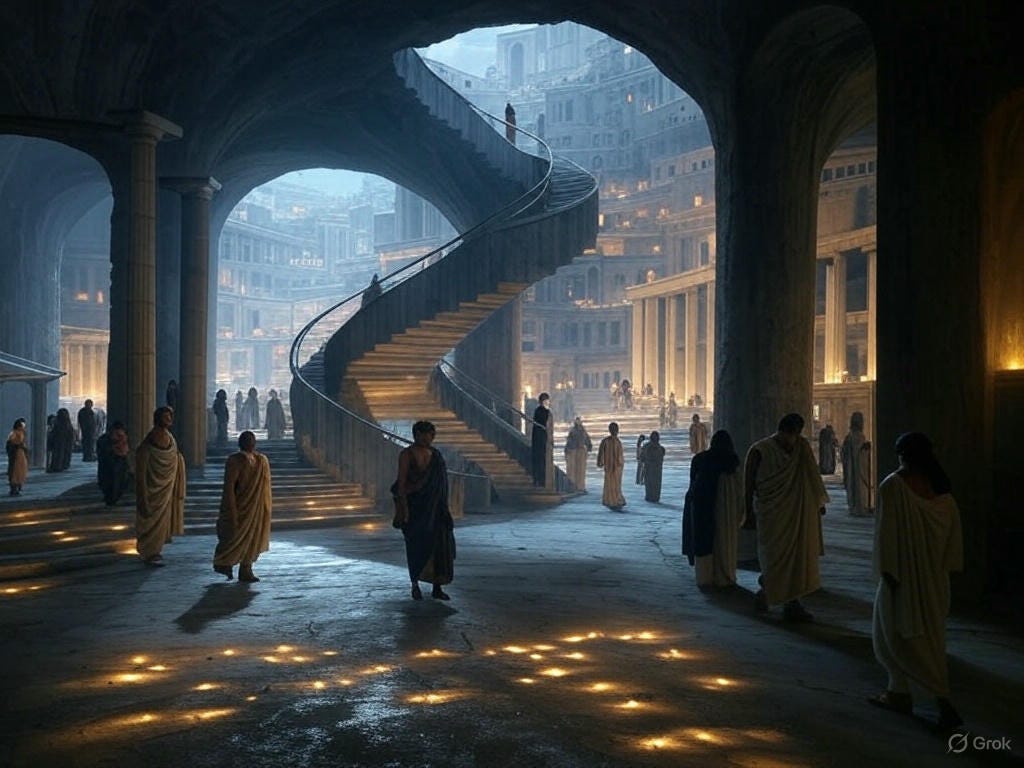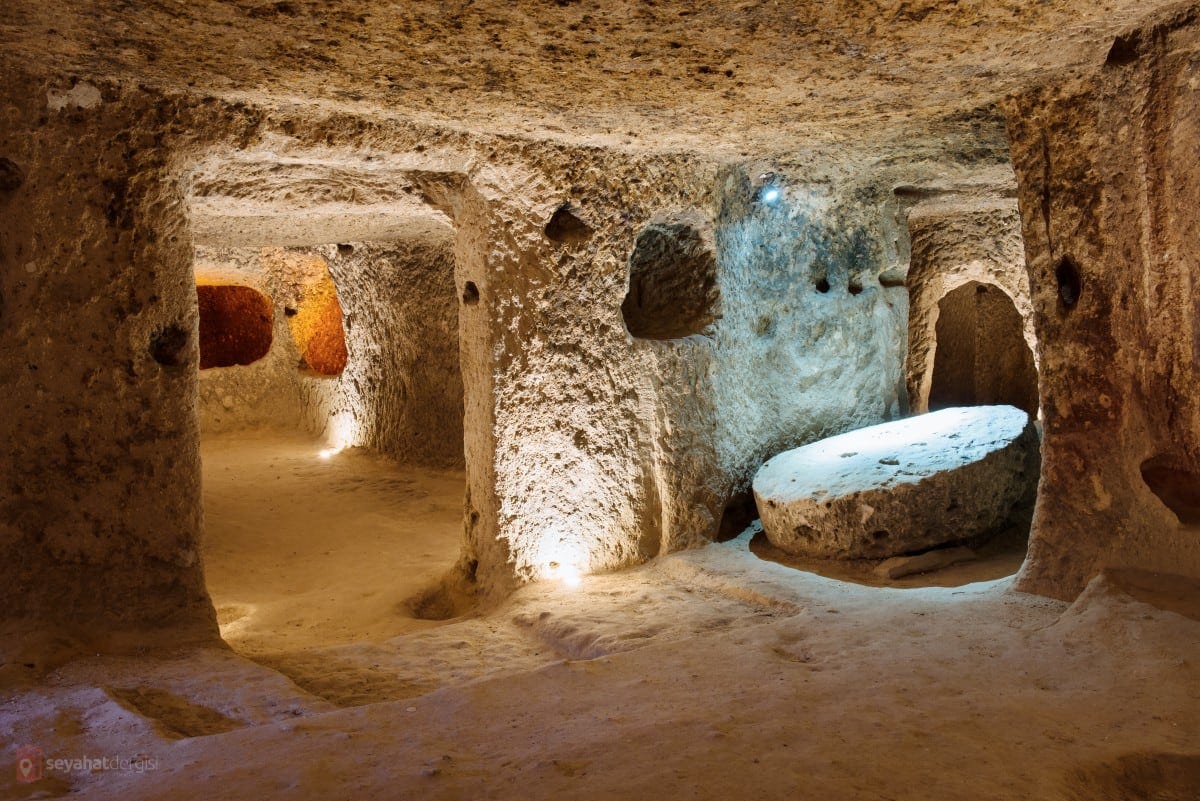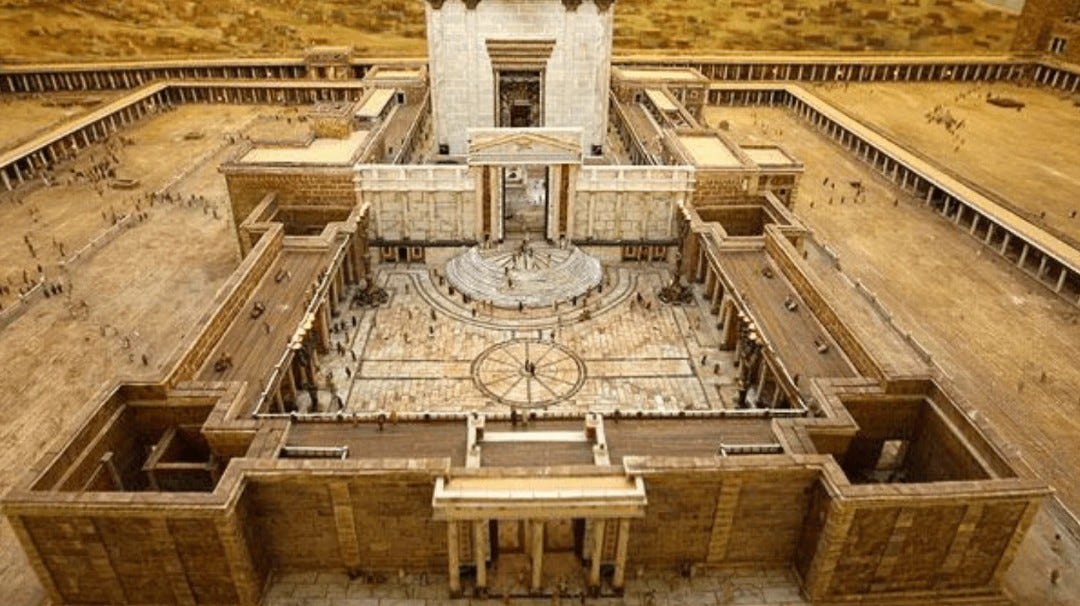‘And God created man in His own image (the imago Dei)’ - Genesis 1:27.
Modern educators often teach students the absurd theory of the evolution of man.
It requires more faith that Adam (man in Hebrew) evolved from amoebas and apes than to believe God created man in His image stamped within each human heart.
This week, scientists announced a discovery under the pyramids that stunned the world.
Scientists have discovered a vast underground ancient city beneath the pyramids of Egypt. It was equipped with electrical power from the arrangement of the stone pyramids on top, which could conduct natural electricity for the city below.
What is the explanation for such a discovery? Is it possible that mankind was far more civilized, technological, and scientific in the ages before a worldwide flood than we could ever imagine?
The Golden Age of Man
Ancient Beliefs in Underground Cities and Tunnels
Great scientists and historians of the past like Herodotus, Archimedes, Isaac Newton, and others would often write about and discuss great ancient technological civilizations and cities that made their cultures underground due to natural catastrophes above).
These scientists believed the ancient subterranean structures were imbued with spiritual and practical significance.
In Egypt, the Serapeum of Saqqara, a vast underground complex housing massive granite sarcophagi, exemplifies advanced engineering tied to religious purposes—specifically, the burial of sacred Apis bulls.
Herodotus, the Greek historian from the 5th century BC, described a labyrinthine network beneath the Giza Plateau, including galleries connecting the Great Pyramid and the Sphinx, suggesting a hidden underworld accessible only to initiates. He wrote of a "subway" beneath the causeway between the pyramids, a claim echoed in later accounts but unverified until recently.
The Mayans constructed tunnels beneath pyramids, such as the Pyramid of the Sun at Teotihuacan, which was discovered in the 1970s. These tunnels were believed to serve ritual purposes.
In Peru, the Incan Qenqo Chico tunnels near Cusco and the Mayan tunnels at Tikal in Guatemala illustrate a global subterranean construction pattern, often linked to cosmology or defense.
The underground city of Derinkuyu in Turkey, dating back over 2,100 years and capable of housing 20,000 people, demonstrates practical applications—protection from invaders—alongside sophisticated ventilation and water systems. These examples suggest that ancient peoples possessed both the motive and the technical prowess to build extensive underground networks, challenging the view of them as primitive.
Isaac Newton, Alchemists, and the Quest for Ancient Wisdom
Isaac Newton (1643–1727), renowned for his contributions to physics, was equally devoted to alchemy and theology, fields he considered superior to his scientific work.
Newton believed the ancient Egyptians held lost knowledge encoded in structures like the Great Pyramid.
His unpublished manuscripts, sold at Sotheby’s in 2020 for $590,285 in today’s U.S. dollars, reveal Newton’s obsession with the Egyptian royal cubit—a unit of measurement he thought could unlock the pyramid’s secrets and validate his theory of gravity - the source for his prediction of biblical events like the apocalypse.
Newton saw the pyramid’s dimensions as a bridge to the Temple of Solomon, reflecting a divine architectural code. As Sotheby’s manuscript specialist Gabriel Heaton noted:
Newton viewed the Egyptians as possessors of ancient wisdom lost to later generations.
The Temple of Solomon was built in 967 BC, the third year of King Solomon’s reign over Israel (971-931 BC).
Newton believed the Temple of Solomon held ‘the key to everything’ in understanding God’s created universe.
Other ancient scientists shared Newton’s reverence for ancient subterranean knowledge and ‘lost cities’ of the underworld.
Let’s examine man’s past, an area of science we are only now beginning to discover due to the intentional destruction of ancient wisdom, to see how far man has fallen.
Keep reading with a 7-day free trial
Subscribe to Wade Burleson at Istoria to keep reading this post and get 7 days of free access to the full post archives.










